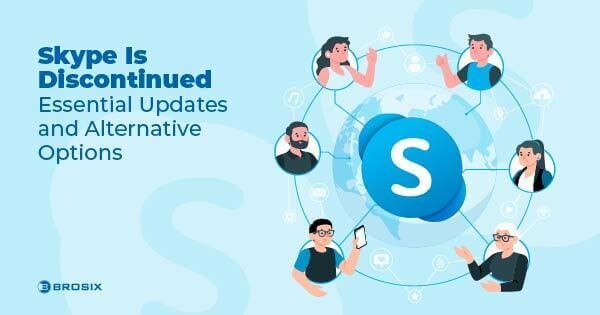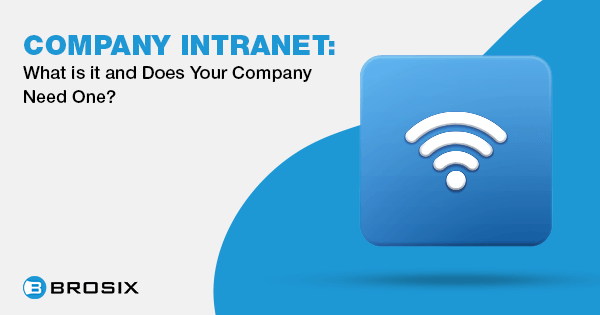Instant messaging has soared in popularity in recent years. In fact, the number of worldwide instant messaging accounts is expected to top 9.5 billion by 2025.
There’s no doubt that your customers are using instant messaging platforms. The same goes for your team.
The real question is whether you’re maximizing instant messaging, also known as IM, to meet your business needs.
That is, connecting with your customers on their preferred channel, while also providing your team with a tool for efficient internal communication and collaboration.
So what exactly is instant messaging, and what are the best instant messaging tools for businesses?
Read on to discover the top instant messaging apps you can use within your organization.
What Is Instant Messaging?
Instant messaging, also known as IM, is an online communication method that connects two or more people for back-and-forth, real-time messaging. It allows users to communicate in the workplace effectively and quickly.
Instant messaging software has long been known for its direct peer-to-peer connections, pioneered by the now inoperative AOL Instant Messenger (AIM).
AIM and other similar programs in the instant messaging market, initially allowed two ‘contacts’ to directly send and receive text-based messages, provided both users were online, logged on with the client, and had access to each other’s unique screen names.
While most people view IM as a vehicle for sending direct messages, nowadays most instant messaging apps employ centralized servers that facilitate messages between users. Often, users access the platform by downloading the client’s application to their device of choice and registering with their mobile phone number. In some cases, access to the network can be controlled by a network administrator.
“Features such as video conferencing, group chats, and status updates allow employees to stay in touch with one another. At TP-Link, we have seen a significant increase in team engagement and morale due to the use of instant messaging tools to bridge the gaps between remote colleagues.” — Laviet Joaquin, Marketing Head, TP-Link
In recent years, IM has expanded to include various communication features, not just for personal use but for corporate environments. This development has brought a range of benefits to both individuals and companies, including better communication between coworkers and increased team productivity.
Top 16 Instant Messaging Tools for External Business Communication in 2024
Now that you’re familiar with the definition of instant messaging, let’s explore my 16 picks for the most popular messaging platforms your business can use. All of them are great for both external and internal communication.
1. Brosix
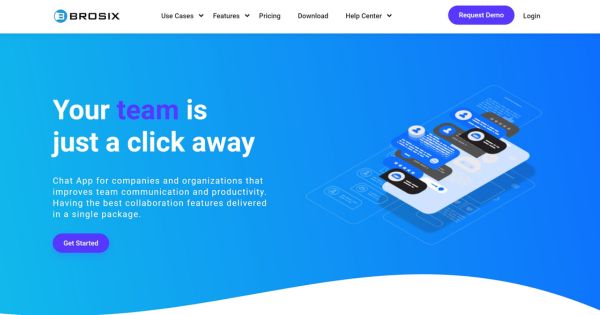
Since 2006, Brosix has been providing an all-in-one business instant messaging app for enterprises of all types and sizes.
With Brosix, you get more than just internal team chat. You get a versatile business solution featuring dynamic productivity tools, robust security, and comprehensive administrative control.
Voice and video capabilities, screen sharing, and a native whiteboard solution streamline communication and collaboration among team members. The option for sending broadcast messages lets you target your message to a handpicked audience.
Let me tell you what’s most distinctive about Brosix from my point of view.
Fully encrypted, private team messaging
A Brosix team network ensures secure business communication. Platform users must be authorized on an individual basis by a network administrator. All channels utilize fully encrypted, peer-to-peer connections that you can further bolster with anti-virus and malware integration.
Custom productivity and platform management
Brosix’s administrative features enable granular platform management. Delegate features and tools on a user or team basis, tailor shared chat spaces and contact lists, authorize multiple team admins, establish individual data security levels, and more.
“I really like how Brosix has channels for different topics. My team has a channel just for our current project. It makes it easy to stay updated and ask each other questions. File sharing is very handy too. We use it all the time to collaborate on documents.” — Finn Wheatley, Financial Expert and Risk Analyst, The Small Business Blog
Brosix pricing: Free team network, chat history, and admin control for 3 users; $4 per user/month for Business; $6 per user/month for Enterprise.
Pros and cons
| Brosix Pros | Brosix Cons |
| Provides secure end-to-end encryption for all communications | Limited free plan compared to other team communication apps like Slack |
| Offers extensive administrative control over user privileges, contact lists, and features | Fewer third-party integrations than some competitors |
| Easy to set up and use | Interface may look outdated to some users |
Available on: Windows, macOS, iOS, Android, Linux, Web
User ratings:
- Trustpilot 4.3 (Stars) from 14 people
- Capterra 4.6 (Stars) from 71 people
- G2 4.7 (Stars) from 44 people
2. Clariti
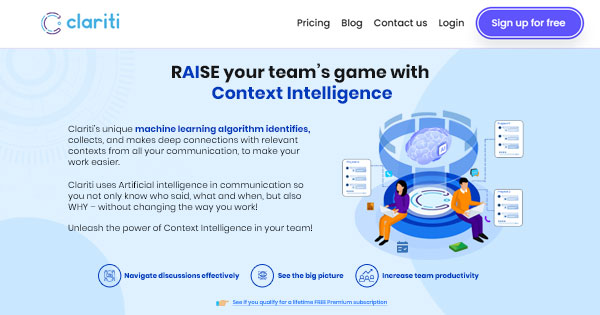
AI-powered Clariti is one of the best instant messaging app for businesses in 2024 due to its unparalleled ability to integrate and streamline communication.
Unlike traditional messaging apps that often create silos of information, Clariti uses artificial intelligence to seamlessly combine emails, chats, documents, calendar events, and feeds into cohesive, context-rich conversations. This unique approach ensures that every piece of communication is organized and easily accessible, reducing the time spent searching for information and enhancing overall productivity.
The AI-driven context management allows users to see the “who, what, when, and why” behind every interaction, making it easier to make informed decisions and maintain a clear understanding of ongoing projects.
Clariti Pricing: Basic version is free; Premium pricing starts from $9.
Pros and cons
| Clariti Pros | Clariti Cons |
| Unified communication | No mobile app |
| AI-powered contextual conversations | No video calling |
| Collaboration tools | |
| Accessible anywhere | |
| Cost-effective |
Available on: Web
3. WhatsApp
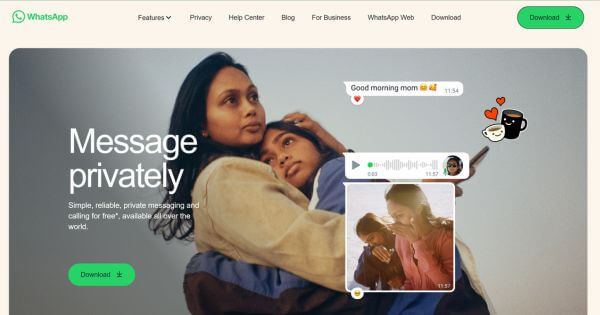
WhatsApp is one of the most popular instant messaging apps around. With 2 billion monthly active users, there’s a good chance your customers are using its texting, group chats, file transfers, and voice and video calls. There’s a group chat feature that allows all members or only admins to send instant messages.
WhatsApp also features business tools to connect enterprises with their customers: the WhatsApp Business App and the WhatsApp Business Platform.
The WhatsApp Business App is designed for small companies, while the WhatsApp Business Platform is suitable for medium and large companies. The latter gives access to the WhatsApp API to help you deliver content at scale. You can also re-engage customers after they abandon the cart, boost customer support using live chat, and access metrics such as instant message delivery and response rate.
“WhatsApp has boosted our team’s cohesion and agility, key to our customer service excellence. The blur between work and personal chats was a hurdle. Our fix? Clear rules on communication timing and smart use of WhatsApp’s notification settings. This strategy has kept our team’s efficiency and personal time in harmony.” — Russell Noga, CEO, Medisupps.com
WhatsApp pricing: Free; WhatsApp Business Platform (API) based on a conversation-based model, depending on location.
Pros and cons
| WhatsApp Pros | WhatsApp Cons |
| WhatsApp Business App offers one-on-one communication, product/service catalogs, and message automation. | WhatsApp Business App doesn’t support VoIP numbers. |
| WhatsApp Business Platform can be used for sending promotional messages, setting automated messages, order notifications, order processing within WhatsApp, and more. | Limited automation capabilities of the WhatsApp Business Platform, which is a challenge in the case of more customer inquiries |
| Available end-to-end encryption |
Available on: Android, iOS, Windows, macOS, Web
User ratings:
- Trustpilot 1.6 (Stars) from 943 people
- Capterra 4.7 (Stars) from 15,738 people
- G2 4.6 (Stars) from 60 people
4. Facebook Messenger
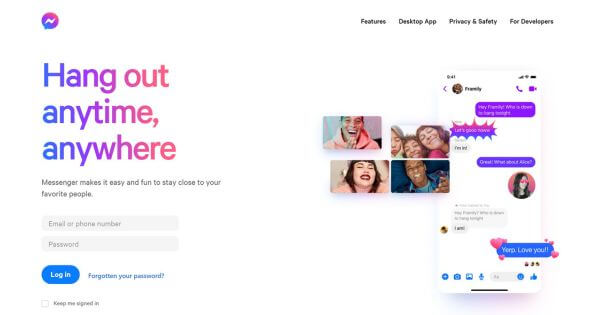
As an IM app to boost your business’s external communication capabilities, Messenger from Meta is right on WhatsApp’s heels.
Your business probably already has a Facebook page, and even if your customers aren’t on Facebook, they’re probably on Messenger. Messenger’s Business Inbox helps you manage your business communications directly from your mobile device.
Facebook Messenger pricing: Free of charge.
Pros and cons
| Facebook Messenger Pros | Facebook Messenger Cons |
| Great for generating leads via Messenger campaigns (priced individually) | Banned in several countries, such as China, Russia, Uganda, Turkmenistan, North Korea, and Iran. |
| Boosts customer service with a live chat plugin | There are plenty of fake profiles or spam accounts that aren’t worth contacting. |
| Provides end-to-end encryption for conversations |
Available on: Android, iOS, Windows, macOS, Web
User ratings: Trustpilot 1.6 (Stars) from 242 people
5. WeCom (WeChat)
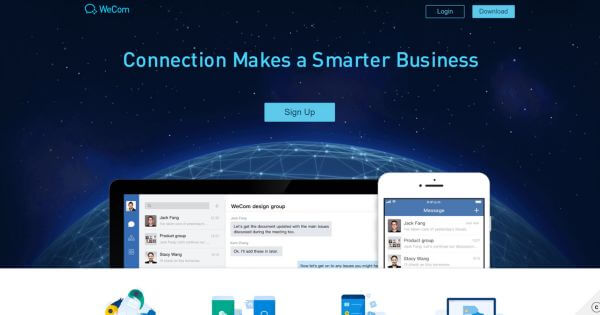
If you’ve got customers in China, WeChat is a no-brainer. With more than 1.3 billion monthly active users, the app for messaging, social media, and e-payments is where your customers will be most accessible.
WeChat is unique because it also doubles as an IM app for businesses. WeCom (formerly WeChat Work) is the dedicated internal communication and office automation face of the platform, used by industry throughout China.
WeCom (WeChat) pricing: Free of charge.
Pros and cons
| WeCom Pros | WeCom Cons |
| Seamless integration with WeChat, providing full messaging capabilities and additional services | Some features may not be available globally. |
| Enterprise-level management tools streamline operations, including attendance tracking. | There are inherent risks to the data privacy and security. |
| Direct communication via WeCom enhances customer relationships and private domain traffic. | Integration challenges may arise with existing systems. |
| The familiar WeChat-like interface simplifies platform adoption for employees. | Customer group size is limited to 200 members. |
Available on: Android, iOS, Windows, macOS
User ratings:
- Trustpilot 1.9 (Stars) from 36 people
- G2 4.7 (Stars) from 14 people
6. Telegram
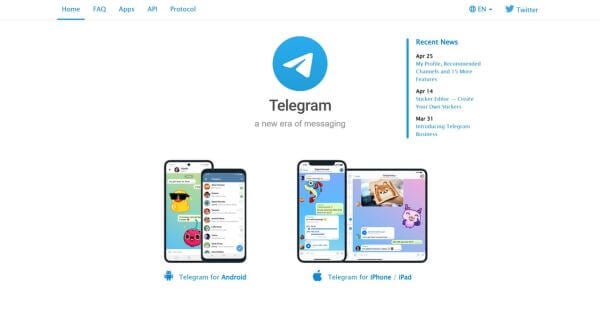
Telegram doesn’t boast the billion-strong user base other instant messaging services on this list do. However, this messaging app is gaining popularity among businesses, especially in countries with tight restrictions on messaging apps.
Trust me, turning your Telegram account into a business account is a breeze. Then, you can take advantage of business features, such as location and opening hours, quick replies, chatbot support, a custom start page, and others.
Just know that you have to manually turn on encryption. What’s more, Telegram’s client-side code is open-source, but its encryption protocol is homegrown and unverified by experts.
Telegram pricing: Free; the price for Telegram Premium, featuring Telegram Business, varies depending on location.
Pros and cons
| Telegram Pros | Telegram Cons |
| Public channels and supergroups with up to 200, 000 users per group | Telegram chats aren’t encrypted by default. |
| Sending files of up to 2GB | The mini apps within Telegram don’t include integration with Google Pay and Apple Pay. |
| Option for developing mini apps as a replacement for a website and their intеgration with over 20 payment providers | |
| Automated messages and chatbots for enhanced customer support |
Available on: Android, iOS, Windows, macOS, Linux, Web
User ratings:
- Trustpilot 1.9 (Stars) from 396 people
- Capterra 4.7 (Stars) from 6,273 people
7. Skype
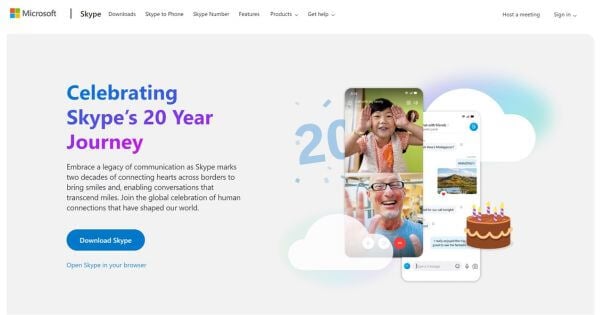
Skype, one of the original apps for instant messaging, began in 2003 as a peer-to-peer platform for IM and calling capabilities. Skype still offers individuals and small teams reliable instant messaging. I believe that Skype is also great for calling landlines at majorly reduced rates.
Unfortunately, Skype for Business was retired by its parent company Microsoft Teams in 2021.
While Skype lives on, check out these Skype for Business alternatives.
Skype pricing: Free; pay-as-you-go calls and Skype-to-phone paid plans vary depending on location.
Pros and cons
| Skype Pros | Skype Cons |
| Free voice and video calls worldwide, including group calls with good quality | Video call quality may be affected by connection strength, leading to potential lags. |
| Facilitates remote meetings and presentations with its screen-sharing options | Integration challenges with calendar apps and local phone numbers may affect functionality. |
| Offers a simple and quick setup process | Some advanced features require a premium account for access. |
Available on: Android, iOS, Windows, macOS, Linux, Web, Xbox One, Kindle Fire
User ratings:
- Trustpilot 1.4 (Stars) from 1,498 people
- Capterra 4.3 (Stars) from 445 people
- G2 4.3 (Stars) from 23,170 people
8. Discord

Like a walkie-talkie, Discord delivers real-time push-to-talk communication. It’s a unique twist on instant messaging software for businesses. Originally created to bring gamers a more interactive experience, Discord’s rich voice capabilities, paired with chat and screen sharing, have gained traction in the business world.
There are some differences, though. While many business messengers organize conversations into workspaces or chat rooms, Discord arranges them by ‘Servers,’ with all your servers accessible on one interface.
Voice chat happens in the background, which you can mute through the push-to-talk feature. Clicking on a voice channel immediately starts communication with users. You can get a wide range of users on the platform, which may not suit your business standards.
Discord pricing: Discord’s freemium version offers core functionality; Nitro for $9.99/month; Nitro Basic for $2.99/month.
Pros and cons
| Discord Pros | Discord Cons |
| Affordable and easy to use | Security concerns due to the lack of end-to-end encryption of conversations |
| Integrations with YouTube, Twitter, Reddit, and others | Limited file uploads at up to 8 MB |
Ability to use bots as collaboration tools | Lack of more advanced dedicated features for business use |
| Great audio sync features | Discord’s voice option is fully separate from text-based messaging. |
Available on: Windows, macOS, iOS, Android, Linux, Web
User ratings:
- Trustpilot 1.5 (Stars) from 1,045 people
- Capterra 4.7 (Stars) from 424 people
9. Mattermost
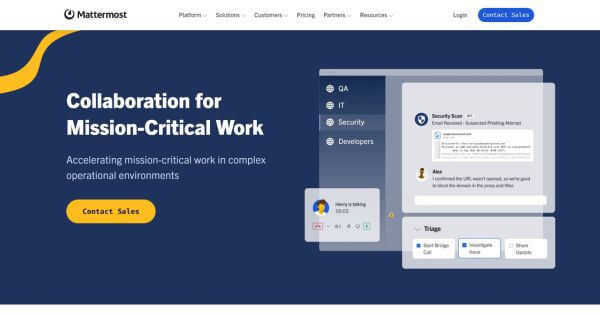
Businesses in search of an open-source instant messaging platform needn’t look further than Mattermost. What’s open-source, you ask? This gives you the power to fumble around with the source code, tailoring it to better suit your company’s needs.
Mattermost pricing: Free version; $10 per user/month, which will suit most small teams and startups; there’s also a scalable option geared toward large businesses.
Pros and cons
| Mattermost Pros | Mattermost Cons |
| High level of customization by tailoring branding, login pages, and languages | Customization and deployment may require technical expertise. |
| Diverse messaging features, such as one-on-one chat, group channels, voice, video, and screen sharing | Requires setup of your server |
| Offers open-source and third-party app connections, such as Jira, Slack, and Github | Lack of built-in video conferencing |
| Robust security system, including OAuth, TLS encryption, and multi-factor authentication | No end-to-end encryption of calls and messages |
Available on: Windows, macOS, iOS, Android, Linux, Web
User ratings:
- Trustpilot 2.9 (Stars) from 8 people
- Capterra 4.4 (Stars) from 155 people
- G2 4.3 (Stars) from 330 people
10. Microsoft Teams
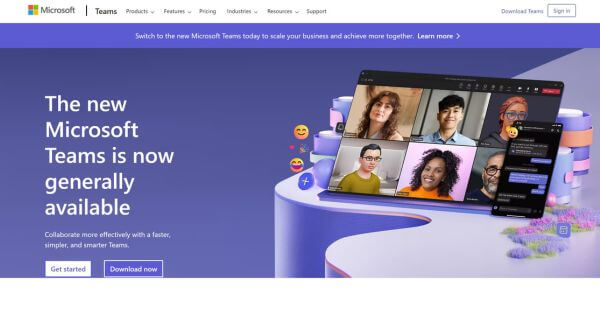
With around 300 million active users per month, Microsoft Teams overtook Slack as the king of instant messaging for business. Internal communication on Teams happens in group chat rooms with threaded conversations or via private chatting.
What I like the most about this app is that it allows me to integrate with other apps I use. In fact, Teams offers over 200 integrations for enhanced functionality.
Teams pricing: One-month free trial for all plans; $4 per user/month for Business Essentials; $6 per user/month for Business Basic; $12.50 per user/month for Business Standard.
Pros and cons
| Microsoft Teams Pros | Microsoft Teams Cons |
| Word-like formatting and deep integration with Office 365 | Мay not be budget-friendly for smaller organizations. |
| Offers a high level of security and privacy, including end-to-end encryption | Known for being complex and time-consuming to set up, requiring patience. |
| Bot assistance through T-bot and Who-bot aids in searching the intranet and extracting relevant information. | Advanced features may be overwhelming for less tech-savvy users. |
Available on: Windows, macOS, iOS, Android, Web
User ratings:
- Trustpilot 1.4 (Stars) from 166 people
- Capterra 4.5 (Stars) from 9,454 people
- G2 4.3 (Stars) from 14,955 people
11. Fleep
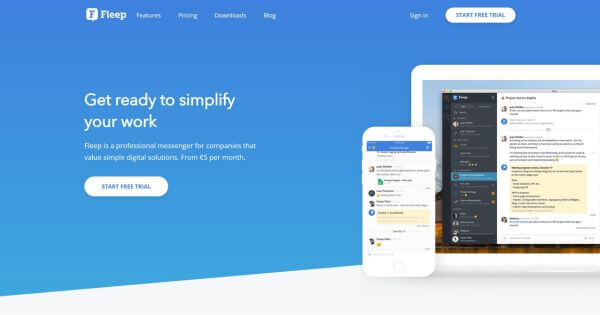
Fleep is a great tool for inter-business communication. It delivers the core messaging capabilities you’d expect from an instant messaging app. With Fleep, you can chat with other Fleep users and teams outside of your organization.
“Not everyone is a tech guru and Fleep by design is inclusive. Even our least tech-savvy team members are active, as it is so simple. It is within everyone’s comfort zone, so if you prefer lengthy emails or just brief messages, Fleep has got you covered.” — Sunaree Komolchomalee, Head of Human Resources, Cupid PR
Fleep pricing: Free trial for 2 weeks; Business Plan starts at $5 per user per month (billed annually by default) for full control over team communication and conversations; Enterprise plan requires a custom price offer. You can also get a month-to-month offer, which is 30% more expensive than the yearly one.
Pros and cons
| Fleep Pros | Fleep Cons |
| Unlimited messaging history | Potential security and privacy concerns if not configured properly |
| Built-in task management functionality | Requires using an external service (Whereby) for voice and video calling, which has limitations. |
| Ability to send emails within the app | Basic users can create only one group conversation (no limitations for Business Plan subscribers). |
| Integrations with popular apps such as Trello, Jira, and Google Drive | |
| Native task management functionality |
Available on: Windows, macOS, iOS, Android, Web, Linux
User ratings:
- Capterra 4.7 (Stars) from 34 people
- G2 4.4 (Stars) from 28 people
12. Chanty
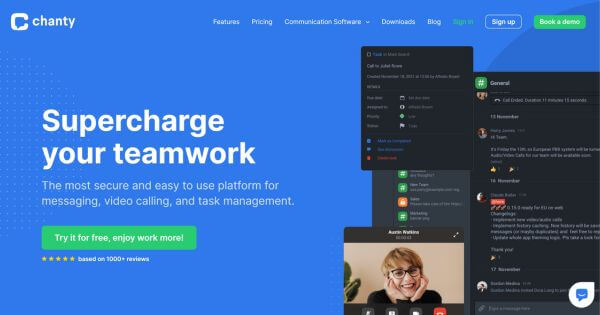
You may not have heard of Chanty, but this relative newcomer should be on your radar. Joining the ever-crowded field of messenger software in 2018, Chanty affords small to mid-sized companies an AI-based business IM tool at a reasonable price.
I love Chanty for its Teambook feature. Teambook keeps messages, links, contacts, and tasks organized by folder in one location. For team collaboration, Chanty offers file sharing, screen sharing, and a complete searchable messaging history.
Chanty pricing: Free plan limited to 5 users per team; $3 per user/month for Business (billed annually).
Pros and cons
| Chanty Pros | Chanty Cons |
| Provides AI-driven instant messaging for small to mid-sized companies | Conversations tab in Chanty can become cluttered, especially with larger teams. |
| Includes one-on-one and group chat as well as voice and video calls | No end-to-end encryption is offered. |
| Offers integrations with popular apps like Google Drive, Trello, Dropbox, and GitHub | |
| Teambook feature for better task management |
Available on: iOS, Android, Windows, macOS, Linux, Web
User ratings:
- Trustpilot 4.4 (Stars) from 10 people
- Capterra 4.7 (Stars) from 34 people
- G2 4.5 (Stars) from 41 people
13. Troop Messenger
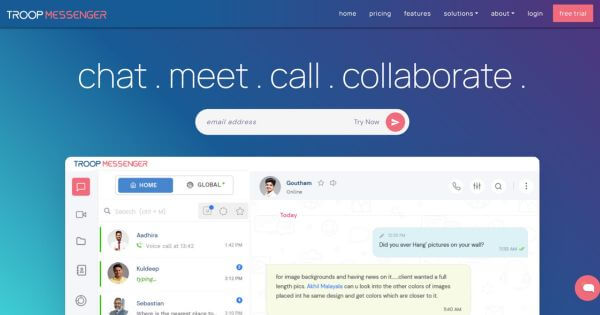
Troop is another secure messaging app you may not be familiar with yet. Attractive pricing options, however, mean that it likely won’t go unnoticed for long.
What impressed me the most about this tool is the fact that the service is offered in two ways: SaaS and on-premise. There’s also the TM-Monitor module—an add-on that’s designed to monitor employee chat history to ensure compliance with employee usage policies.
With Troop Messenger, you get messaging, voice and video, file sharing, screenshots, usage analytics, and fingerprint security. The Enterprise plan tacks on screen sharing, some privacy chat features, and the ability to edit sent messages.
“Troop Messenger has some features that are perfect for our collaborative selling style. For example, we can create dedicated channels for specific developments. This way, the whole team (agents, marketing, and project managers) can be on the same page about features, pricing, and talking points for potential buyers. We can also share documents and floor plans directly in chat, which saves a ton of time compared to emailing things back and forth.” — Samantha Odo, Real Estate Sales Representative and Montreal Division Manager, Precondo
Troop pricing: Free 7-day trial; $2.50 per user/month for Premium; $5 per user/month for Enterprise; $9 per user/month for Superior.
Pros and cons
| Troop Messenger Pros | Troop Messenger Cons |
| Allows self-messaging, code sharing, participant mentioning, and delayed message responses | No option to record meetings. |
| Bulk messaging option | Occasionally, the app’s loading time is slow. |
| Integrations with Zapier, Google Drive, and Dropbox | The lack of a web version is frustrating to some users |
| Robust security measures, including end-to-end encryption |
Available on: iOS, Android, Windows, macOS, Linux
User ratings:
- Trustpilot 4.4 (Stars) from 13 people
- Capterra 4.8 (Stars) from 16 people
- G2 4.6 (Stars) from 74 people
14. Flock

Flock is hugely popular in its native India. But it isn’t stopping there, as Flock recently set its sights on Slack, Google, and Microsoft.
Flock offers the core chat features you’d expect from business messenger software. These are chat channels, direct messages, group messages, threaded replies, and alerts and notifications.
Flock pricing: Freebie plan limited to 10K searchable messages; $4.50 per user/month for Pro (billed annually); Enterprise Plan on request.
Pros and cons
| Flock Pros | Flock Cons |
| Includes task management, to-dos, channel-based mailing, and polls without requiring additional integrations | Limited to a maximum file upload size of 100 MB |
| Offers over 50 integrations with popular apps like Google Drive, Trello, Dropbox, and Twitter | Some users find Flock’s interface less user-friendly and intuitive |
| The free plan provides 5GB of shared storage, while the Pro and Enterprise plans offer 10GB and 20GB, respectively. |
Available on: Windows, macOS, iOS, Android, Linux, Web
User ratings:
- Trustpilot 2.7 (Stars) from 6 people
- Capterra 4.5 (Stars) from 339 people
- G2 4.4 (Stars) from 268 people
15. Ryver
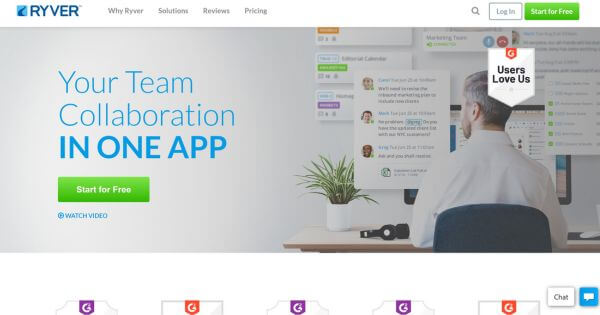
Ryver’s built-in Kanban board and task tracking keep everyone at work on the same page. Coupled with chat, voice, and video communication, the messaging platform for business is worth considering.
Messaging takes place directly, in private groups, or in open forums. Select messages and add subjects and formatted, long-form content. It’s pretty impressive to me how all of this can then be turned into tasks and managed on a Kanban board.
Ryver pricing: $69/month for up to 12 users; $129/month for up to 30 users; $4/user for over 30 users; Enterprise plans on request.
Pros and cons
| Ryver Pros | Ryver Cons |
| Messages can be turned into tasks and managed on a Kanban board. | Integration with Zapier can significantly impact the bottom line, especially with plans starting at $289/month for 50K tasks. |
| Reminder feature to follow up on conversations | Customization options are limited. |
| Dedicated notifications page ensures timely response to incoming messages. | No free plan is available. |
| Integrates with Dropbox, Google Drive, and Zapier | No end-to-end encryption of conversations |
Available on: Windows, macOS, iOS, Android, Web
User ratings:
- Trustpilot 3.7 (Stars) from 1 people
- Capterra 4.4 (Stars) from 43 people
- G2 4.4 (Stars) from 152 people
16. Slack
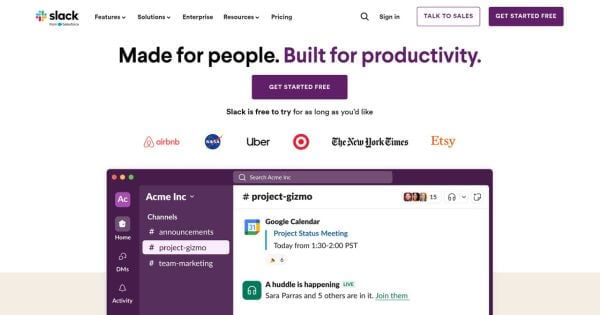
Despite falling behind Microsoft Teams, Slack is often lauded as the leading tool for business instant messaging and collaboration. With Slack, public and private channels, thread-based chat, and direct messages make it easy for organizations to streamline communications and have relevant conversations.
I’d like to emphasize Slack’s tendency to be on top of new trends, such as artificial intelligence (AI). They recently added the Slack AI add-on, which can be purchased with any of the paid plans. Slack AI helps me search through conversations and summarize them in seconds.
However, Slack’s price point puts it out of reach for many startups and small teams. What’s more, its powerful integrations mean that many of its capabilities are the result of other tools and technologies, and they could expose your business network to vulnerabilities.
“We’ve used Slack and have been quite satisfied with it. It’s good for team collaboration. It’s pretty natural. It’s easy to sync with, and it’s really good for storing files and conversations in the cloud.
But on the other hand, it may not be so good that it keeps everything in the cloud because it’s company data, and it’s kept on a server that doesn’t belong to us. So this was a big concern that we had to face. We decided to implement end-to-end encryption for the sensitive channels we’ve used.” — Mike Sadowski, Founder and CEO, Brand24
Luckily, there’s no shortage of other suitable IM programs. If Slack isn’t the tool for you, explore these alternatives.
Slack pricing: Freemium version limited to 10 integrations or published workflows; $7.25 per user/month for Pro Plan; $12.50 per user/month for Business+; Enterprise Grid on request.
Pros and cons
| Slack Pros | Slack Cons |
| Provides built-in screen sharing, voice and video calling, automated reminders, and keyword alerts | Steeper learning curve compared to other similar tools |
| Offers two-factor authentication, data encryption, and enterprise key management for enhanced security | Lack of end-to-end encryption |
| Offers over 1,500 integrations, making the platform highly versatile |
Available on: Windows, macOS, iOS, Android, Linux, Web
User ratings:
- Trustpilot 2.9 (Stars) from 276 people
- Capterra 4.7 (Stars) from 23,217 people
- G2 4.5 (Stars) from 32,576 people
Choose the Right Instant Messaging Platform for Your Business
Instant messengers are in demand. The rapid growth of chat apps as a preferred communication channel for billions, not to mention the enhanced security and productivity of business instant messengers, make IM technology a must-have for any company.
But it’s not as simple as just choosing any messaging platform or program.
- Use personal-grade IM apps as a way to connect with your customers, like handling quick product inquiries, for example. Focus on secure instant messaging. Be careful with apps that don’t offer end-to-end encryption as the default. Don’t use free instant messengers for internal team communication.
- Go with a business instant messenger for your internal team communication and collaboration. Powerful security protocols, administrative control features, and productivity tools safeguard data and information while improving communication and teamwork.
When choosing the right messaging app for your business, examine your internal and external communication needs. That’ll help you determine which IM app is best suited for your business. Or an instant messenger for business, like Brosix, would be more appropriate?
Better yet, why not cover all your bases and make use of both?




